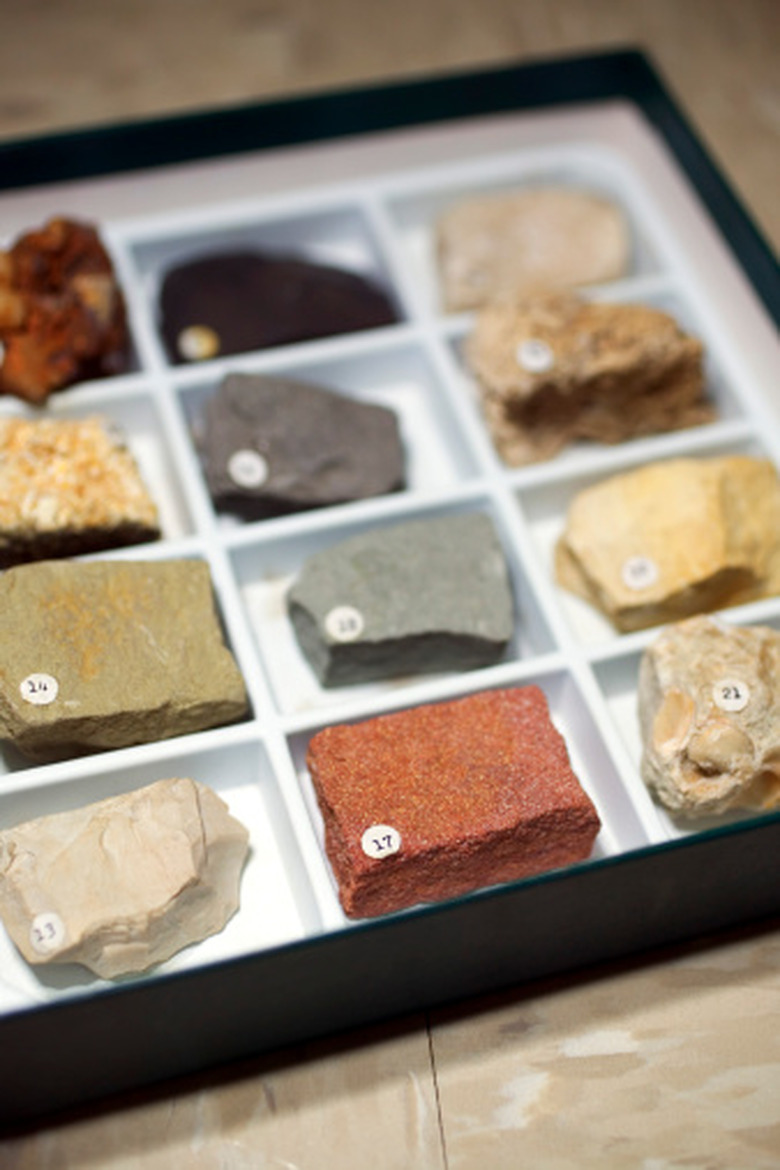What Minerals Make Up The Earth's Crust?
A mineral is a naturally occurring solid with a structure and definite chemical composition. Although similar to rocks, minerals are the building blocks for making rocks, and are found in various types of rock in differing shapes and chemical compositions throughout the Earth's crust. Although minerals differ in shape, composition and distribution, four major classes of minerals make up the Earth's crust.
Silicates
Silicates
The silicate class of minerals makes up 90 percent of the Earth's crust, and is compounds of silicon and other chemical elements. The two most common silicate types found in the Earth's crust are quartz and feldspar minerals. Quartz, also called silicon dioxide, contains silicon and oxygen and has types that are both clear and colored, such as:
- rock crystal
- amethyst
- citrine
Feldspar minerals, such as albite and oligoclase, often contain aluminum, calcium and sodium as well as silicon. Lesser concentrations of silicates include mica and olivine.
Carbonates
Carbonates
Composed of calcium and carbon, calcite is another major contributor to the Earth's crust at about 4 percent. Also known as calcium carbonate, calcite is prevalent in all three types of rocks, including sedimentary limestone and sandstone, metamorphic marble and igneous carbonatite. Varieties and colors of calcite minerals are numerous, including aragonite, a polymorph of calcite. A polymorph is a mineral with an identical chemical composition, but formed in a different shape.
Oxides
Oxides
Another class of minerals found in the Earth's crust is oxides, formed with oxygen and other chemical elements. A common oxide mineral is magnetite, composed of oxygen and iron. Making up 3 percent of the crust, magnetite is black with a dull to metallic luster. Related oxide minerals include chromite and the gemstone spinel. Chromite consists of iron, chromium and oxygen, while spinel is a colorful stone composed of magnesium and aluminum as well as oxygen.
Sulfides
Sulfides
Although sulfides are small contributors to the Earth's crust, many are valuable components in metallic ore, such as copper, lead, silver, zinc and iron, with iron ore making up the remaining 3 percent of the Earth's crust. Found mostly in igneous, or volcanic, rock, sulfides are generally metallic and opaque, such as argentite, a silver sulfide. However, transparent sulfides do exist, including cinnabar, a mineral composed of mercury and sulfur, and realgar, composed of arsenic and sulfur.
Cite This Article
MLA
Hayes, Jennifer. "What Minerals Make Up The Earth's Crust?" sciencing.com, https://www.sciencing.com/minerals-make-up-earths-crust-8616149/. 24 April 2017.
APA
Hayes, Jennifer. (2017, April 24). What Minerals Make Up The Earth's Crust?. sciencing.com. Retrieved from https://www.sciencing.com/minerals-make-up-earths-crust-8616149/
Chicago
Hayes, Jennifer. What Minerals Make Up The Earth's Crust? last modified August 30, 2022. https://www.sciencing.com/minerals-make-up-earths-crust-8616149/
